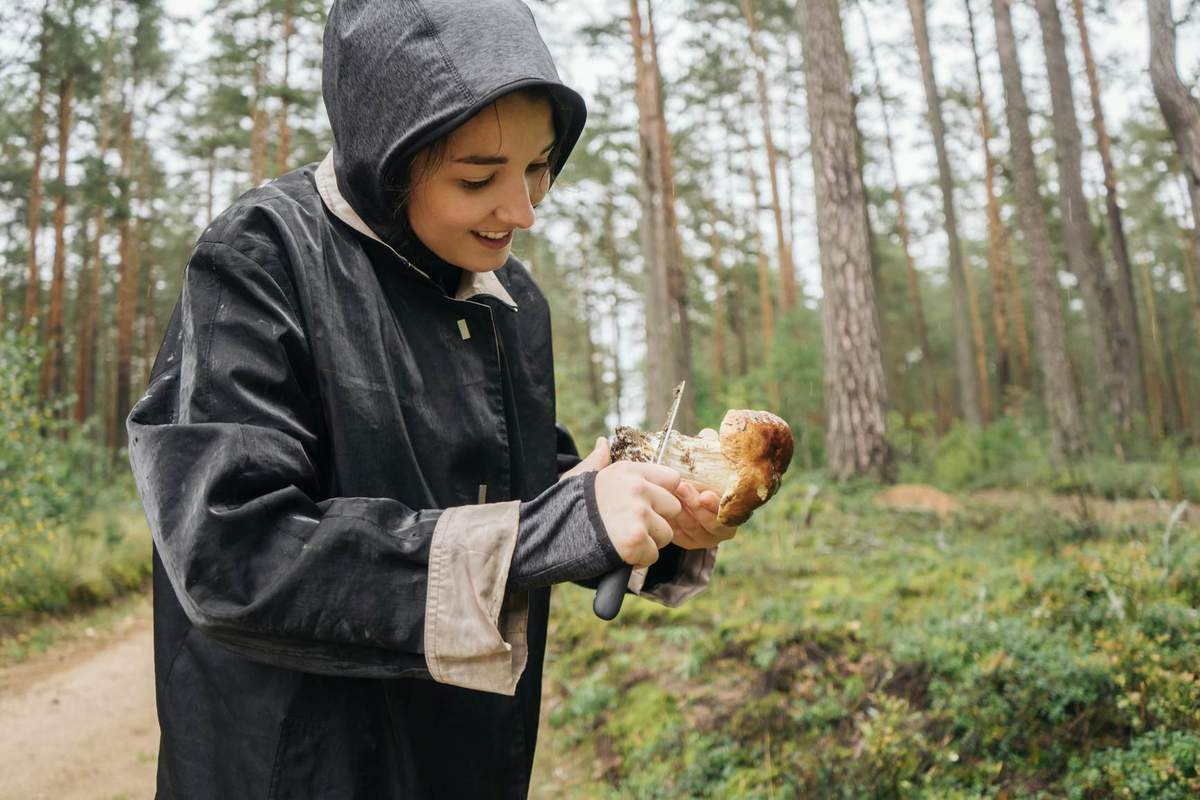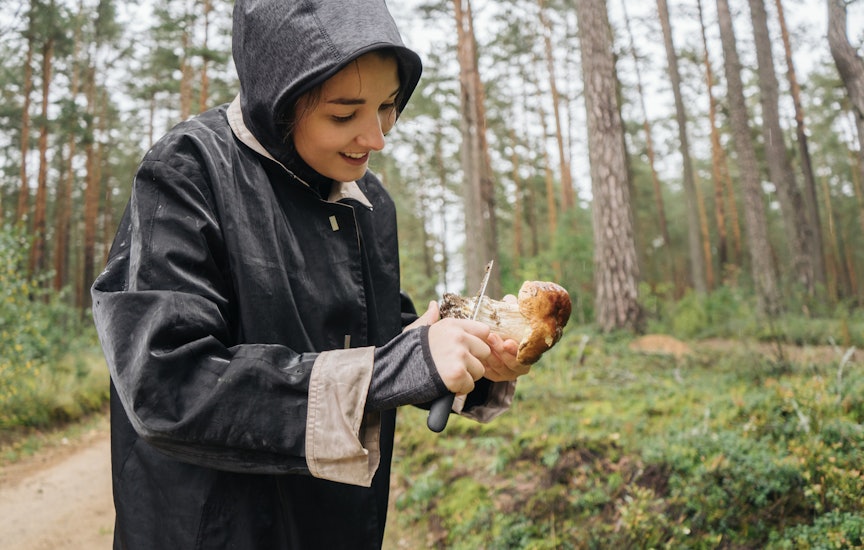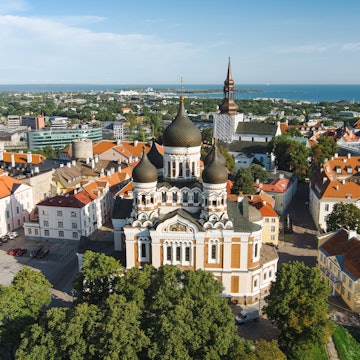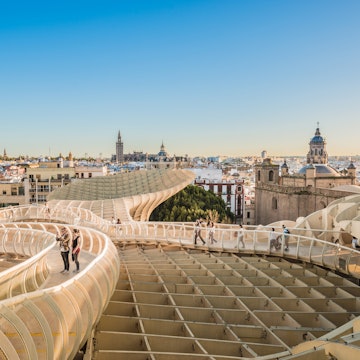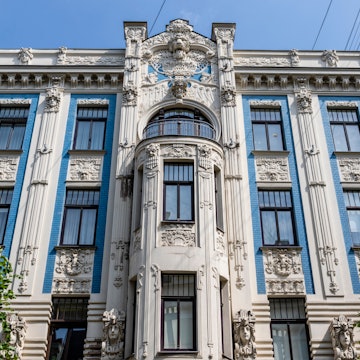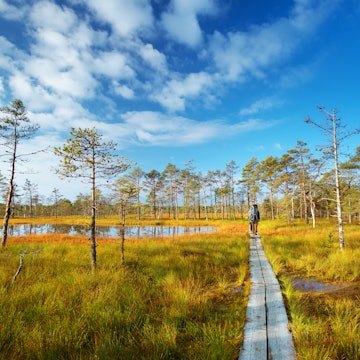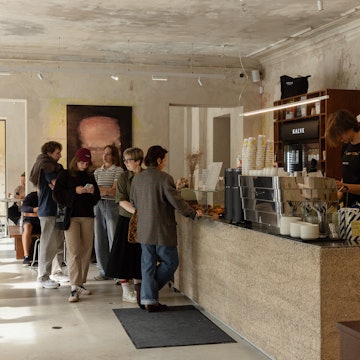

Plan your trip to Latvia with our guide for first-time visitors. diegograndi / Getty Images
For many first-time visitors, whether traversing the trio of Baltic States on a capital-hopping trip or simply seeking an affordable weekend getaway, Latvia is Rīga. Long considered the most cosmopolitan Baltic city, the country’s capital is as renowned for its handsome Old Town as its inexpensive party scene.
Yet, for many Latvians, the ideal local getaway is the antithesis of a city break. Nature is this nation’s DNA. Foraging for berries, birch sap and mushrooms in pristine forests, taking a Baltic Sea dip (no matter the weather) on a dune-ribboned beach, and embracing age-old bathhouse rituals are all popular pastimes. And with less than two million people calling Latvia – a country that is roughly half forested – home, you never need stray far to find your own slice of unspoiled serenity.
With story-laden castles, epic trails along deserted shorelines, and an often-overlooked cultural scene, there are abundant reasons to visit Latvia. Here’s our guide to planning your perfect first trip.

When should I go to Latvia?
If you're focusing on Rīga’s architecture and museums, there isn’t really a bad time to visit Latvia. You’ll just want to dress and pack accordingly. Summer has more reliable, warmer weather and longer days, bringing an animated al fresco atmosphere (and elevated prices) to the city. In December, it’s all about cozy cafes and magical Christmas markets, often accompanied by a sprinkling of fresh snow. However, you might want to skip the coldest, shortest days in January and February – even if costs are as low as the temperatures – unless you’re eager to experience ice swimming, cross-country skiing, or Latvia’s other winter sports.
For less frigid outdoor exploration, plan to visit the national parks between late spring and early autumn when camping is a pleasure, you’re more likely to meet locals out and about foraging, and the weather is generally great for long days of hiking, kayaking or cycling. October is also dazzling when the forests turn golden-hued with fall foliage. Baltic Sea beaches calling? July and August are your best bets for more consistent blue skies and a crammed events calendar, including big festivals like Liepaja’s Summer Sound. Time your visit for June 23 to join the Līgo and Jāņi midsummer festivities. Over these two days celebrating the summer solstice, you’ll experience pagan traditions, flower headdresses, drinking until dawn, and perhaps even leap over a bonfire.

How much time should I spend in Latvia?
If you’ve only got a weekend to experience Latvia, you’ll likely want to dedicate both days to Rīga. Alternatively, take a whirlwind tour of the Old Town and spend your second day relaxing in the beach resort of Jūrmala (it’s 35 minutes by train to Dubulti station) or visiting Sigulda’s castles and museums in the Gauja National Park. Even if you don’t have time to venture deep into the countryside, you can get a taste of bucolic and traditional Latvia at the Ethnographic Open-Air Museum on the city’s fringes.
Better still, slow down and spare a few extra days to add Cēsis Castle or Rundāle Palace to your itinerary. If you’ve got a week, you’ll be able to ease into the Latvian lifestyle. Plan some soul-soothing hikes along wooded trails. Spend a couple of nights in a remote cabin. Enjoy a traditional Latvian bathhouse ritual, which involves being brushed by branches and herbs in a pirts (sauna). Or explore some of the wildest coastal hideaways, such as the pine-backed and windswept Cape Kolka headland. Linger a little longer, and you’ll have time to lap up all Latvia has to offer, from seeing a beloved basketball or ice hockey game to exploring the lesser-visited east via Daugavpils, home to the Mark Rothko Art Centre.
Is it easy to get in and around Latvia?
With ample connections to European cities, Rīga Airport (30–40 minutes from the Old Town) is the largest in the Baltic States, making Latvia often the easiest of the three countries to reach. If you’re traveling overland, there are international coach connections with Lux Express – I’m a big fan of the onboard complimentary coffee machine – or FlixBus to Vilnius in Lithuania (4 hours), Tallinn in Estonia (4.5 hours), and Warsaw in Poland (11 hours). There’s also a daily train linking Rīga with Vilnius (4.25 hours), with rail connections to Estonia requiring a change at the border twin-town of Valka/Valga.
Getting around Latvia is equally straightforward, whether you’re embarking on a road trip through the Baltic States or planning to use public transport. Latvian Railways link large cities and slice through Gauja National Park (buy tickets on Vivi), with regional and local buses providing better coverage to smaller towns.
The transport section of website 1188 and Mobilly are helpful tools for checking timetables and buying tickets, though even some of the smallest rural buses accept card payments. Buying from the driver can sometimes be more expensive, and in some cities, you must pre-buy your ticket from a machine or a Narvesen convenience store. On longer trips, be sure to have some change for luggage fees, which are often charged as an extra when boarding. Prefer to explore on foot? You’re in luck. Latvia is a fairly flat country with an extensive network of paths, including the cross-border Baltic Trails.

Top things to do in Latvia
Appreciate Rīga’s array of architecture
Cosmopolitan, classical, eclectic and surprising, Rīga reels you in with its melange of architectural styles and its assembly of buildings – many of which have been extended and adapted by the rulers and occupiers who have been and gone. And with old moats reborn as canals, Zeppelin hangars repurposed as Europe’s largest market, and a new wave of futuristic architecture, such as the striking National Library of Latvia, poking around every pocket of Rīga on foot is a delight.
In the Old Town, Vecrīga, medieval marvels prevail. Hulking Rīga Cathedral, renovated Rīga Castle, and the trio of buildings affectionately known as Three Brothers, one of which is the city's oldest abode, provide plenty of age-old eye candy. Then there’s the spotlight-stealing, bombed-then-rebuilt House of the Black Heads, with its reimagined Renaissance interiors. Stroll a little further to Alberta Iela, and the show starts to shift to some of the world’s most astonishing and extensive array of Art Nouveau architecture, born from an industrial boom in the 1900s.
Visit Gauja National Park’s trio of timeless castles
Latvia has an abundance of dense woodland, boardwalk-topped bogs, and enticing lakes across its four national parks and forests. But for first-time visitors, the largest, Gauja National Park, is arguably the best to beeline for. With a cable car, camping, cabins, towns, and train connections to the Estonian border, it’s easy-access nature, even possible on a day trip from Rīga or as a stopover en route to your next Baltic State.
Nature aside, Gauja glows with castles. Quite literally, in the case of Cēsis Castle, where you’ll be handed a candlelit lamp to explore the murky ruins of the medieval fortress. Once a former residence of the Livonian Knights, it’s now occupied by an adorable bushy-tailed castle cat. Closer to the park’s border, the forest-flanked town of Sigulda shines with its own mismatched pair in the Sigulda Castle Complex. Saving the most informative until last, the Turaida Museum Reserve, with its striking red-brick castle, detailed museum, and extensive grounds dotted with exhibit-holding outbuildings, will answer your remaining questions on Livonian history.

Retreat to timeless Kuldīga, Latvia’s newest World Heritage Site
Europe's widest waterfall, a flying fish festival, and a maze of sand caves – it’s a wonder it took Kuldīga so long to appear on UNESCO’s radar. But it did, and in late 2023, this historic western town earned World Heritage Status, albeit for its enduring medieval layout and Duchy of Courland and Semigallia history rather than its more quirky distractions.
For a deeper dive into Kuldīga and the Kurzeme region’s now accoladed history, stop by the Kuldiga County Museum, housed in a well-preserved wooden villa typical of the region, or experience a live-action recounting of plagues and days of yore in the interactive Dzīvais Museum. Then, amble through the pretty town towards Kuldīga Waterfall, the Ventas Rumba, a stumpy cascade that holds the title of the continent’s widest waterfall.
Roam Rundāle Palace's opulent rooms and gardens
Latvia is home to hundreds of manor houses, stately homes and palaces. Some of which, such as the 14th-century Jaunpils Castle, you can even sleep in. Yet few, if any, compare with the elaborate splendor of Rundāle Palace, a monumental Baroque residence designed by Francesco Rastrelli for the Duke of Courland in the mid-18th century.
Much of today’s elegance is thanks to a painstaking restoration project. But don’t let that put you off. The enchanting Versailles-inspired gardens, scented by roses in spring, and the great halls, with their frescoed ceilings and period furniture, are exquisite. Be sure to plan a few hours to explore the palace, especially as the museum’s collection spans from the private chambers right down to the basement.
My favorite thing to do in Latvia
Arrive on foot. Being able to walk across a land border always feels special, but the Baltic Coastal Hiking Route, one of the two long-distance Baltic Trails, makes it even more memorable. Plus, if you don’t have months to spare, it’s a terrific introduction to these Herculean trails that traverse the three Baltic States.
I love (and highly recommend) the stretch between Šventoji in Lithuania and the remote Latvian fishing village of Pape Koņi. In just a day or two, you’ll feel blissfully disconnected, even when visiting the rural Vītolnieki museum with its traditional homesteads and wooden 19th-century buildings rarely still seen elsewhere. Camping at the serene Mikjāņu sēta, seconds from the dunes, with only the neigh of wild horses, the crackling of a campfire, and the breaking of the Baltic Sea disturbing the silence, was unforgettable.
And those beaches? Phenomenal! There’s something seriously therapeutic about the Baltic Coast’s limitless swathes of footprint sands, especially out here, far from the beach resort towns of Liepāja or Ventspils. Do shoreline strolls get any better than unending views of dunes and pine forests, the rare wave to a fellow walker, and the chance to swim or set yourself down on the fluffy sands whenever the mood takes it? I’d say no. This is untouched Latvia at its best.

How much money do I need for Latvia?
While Rīga remains relatively affordable compared to some other European capitals, it has started to shake its budget backpacker status in recent years. With high inflation and an increase in international tourism, food and drink prices in Vecrīga are considerably more costly than in other parts of the country. Stray from the Old Town to find more reasonable local spots.
Overall, though, Latvia provides excellent value for money. You’ll find fairly priced feasts, drinks, and lodging in less-visited destinations. In late June, July, August and leading up to Christmas, accommodation prices do rise. However, there’s usually an affordable guesthouse or campsite to be found somewhere along the rural coast or in the hinterlands. And with so much of Latvia’s pull being priceless nature, planning an inexpensive offbeat trip is never impossible.
Here are some of the everyday costs you can expect:
Basic campsite: €0–10
Hostel dorm room: from €15–30
Basic room for two: from €25
Self-catering apartment (including Airbnb): from €40
Public transport ticket in Rīga: €1.50
Train ticket from Rīga to Cēsis: €4.40
Long-distance coach ticket from Rīga to Tallinn or Vilnius: €14–19
Coffee: €1–4
Pint: €2–5
Traditional and affordable dinner for two: €30
Museum and attraction tickets: €2–20
Can I wild camp in Latvia?
Wild camping is one of Latvia’s greatest joys. Still, there are some restrictions on where you can pitch, specifically around protected areas, dunes, non-rural beaches and private forests. Planning some overnight options in advance will avoid any issues. The Dabas Türisms app is an excellent resource for finding free and paid rest areas, as are the maps suggested by the Baltic Trails website.
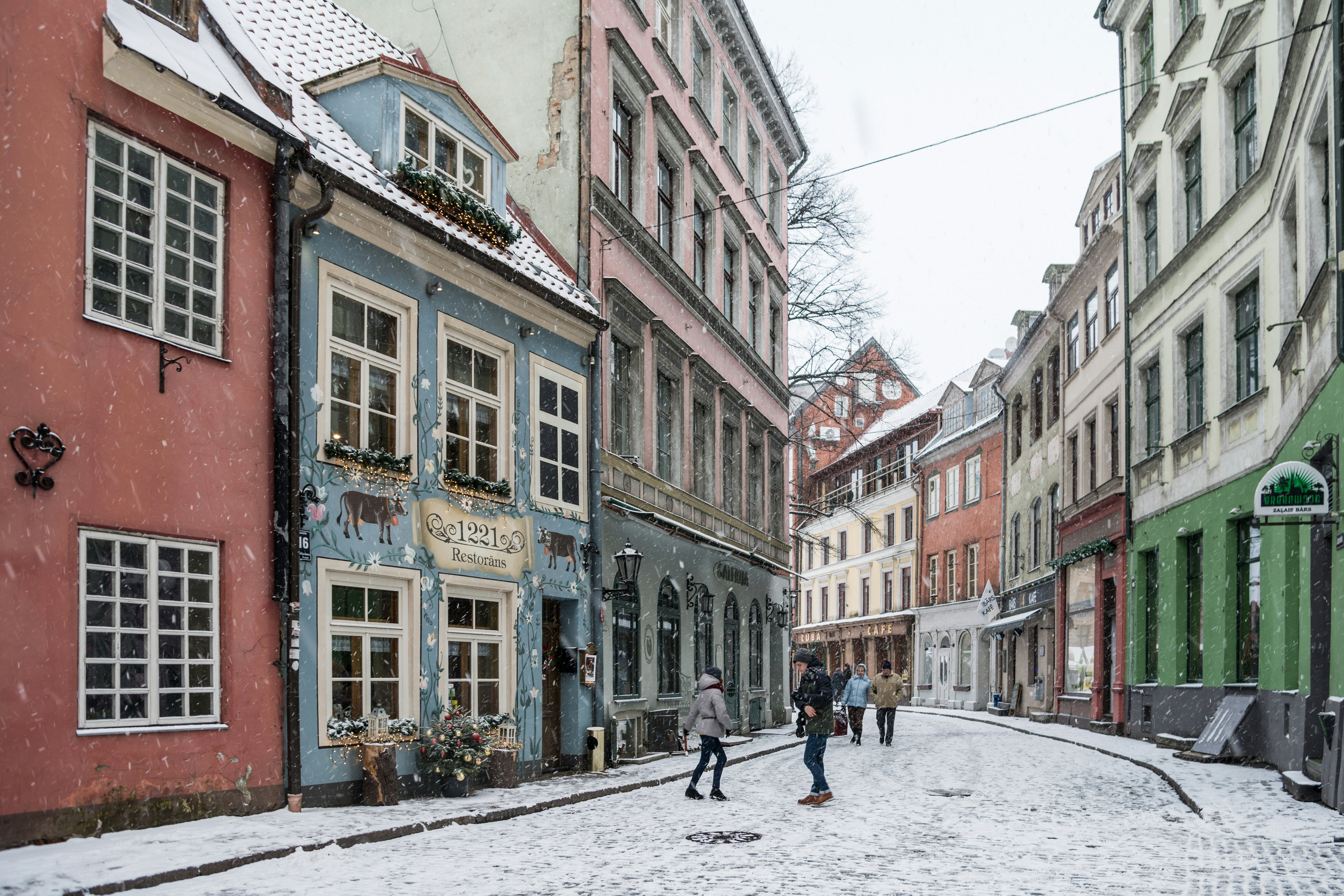
What should I pack for Latvia?
Your Latvia packing list will vary drastically from season to season. Yet even in summer, it's advisable to pack a light rain jacket and warm layers, especially if you’ll be spending time on the breezy Baltic Sea. Decent hiking boots that are comfortable when walking on various terrains, including sand, are essential for cross-country trails.
Should I tip in Latvia?
Tipping in Latvia is an appreciative gesture rather than expected. Rounding up or leaving a euro or two is standard, while 5–10% in sit-down restaurants, especially in Rīga, has become common.
Is Latvia a safe place to travel?
Latvia is generally a safe and welcoming country for travelers, including those visiting solo. Rīga has a very welcoming women-led Couchsurfing community hosting meet-ups and events. However, while Rīga is a reasonably liberal city, LGBTIQ+ travelers should keep in mind that more rural areas may not be as socially progressive.
What languages are spoken?
English is widely spoken in Rīga, by many young people and in areas popular with international visitors. Still, learning some basic phrases in Latvian, the official language, is practical and polite. More than a quarter of Latvia’s population speaks Russian as their mother tongue, and heading east towards Daugavpils, it becomes the primary language. However, due to the Russian and subsequent Soviet occupations and the current situation with Ukraine, you should be mindful when discussing sensitive subjects or deciding which language to initiate conversation in. Some former Soviet and Nazi sites, such as Karosta Prison Hotel, might have been turned into questionable entertainment for travelers, but that doesn’t mean every citizen is as keen on making light of their country’s often harrowing history.





